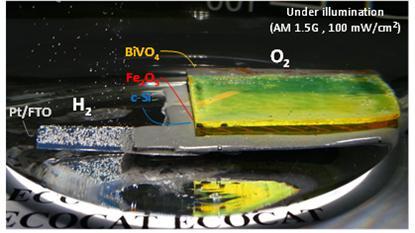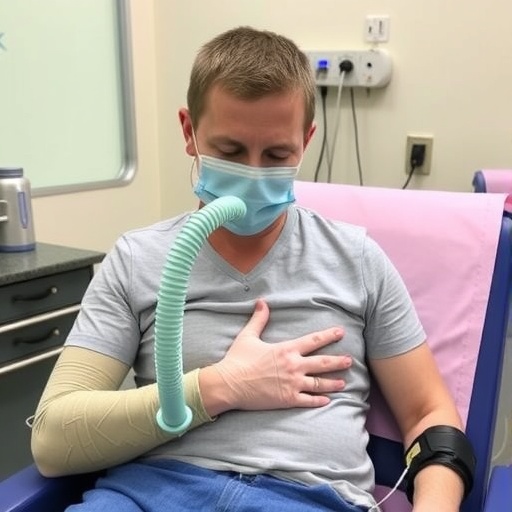
Credit: UNIST
A team of international researchers, affiliated with UNIST has recently engineered a new artificial leaf that can convert sunlight into fuel with groundbreaking efficiency.
The research results achieved by Professor Jae Sung Lee and Professor Ji-Wook Jang of Energy and Chemical Engineering at UNIST in collaboration with Professor Roel van de Krol at the Helmholtz-Zentrum Berlin, Germany was published in the December issue of the renowned scientific journal, Nature Communications.
In the study, the research presented a hetero-type dual photoelectrodes, in which two photoanodes of different bandgaps are connected in parallel for extended light harvesting. Their new artificial leaf mimics the natural process of underwater photosynthesis of aquatic plants to split water into hydrogen and oxygen, which can be harvested for fuel.
This study is expected to contribute greatly to the reduction and treatment of carbon dioxide emissions in accordance with the recent Paris Agreement on climate change. Because using hydrogen produced by artificial leaf as fuel, does not generate carbon dioxide emissions. In addition, it can be used as a cheap and stable hydrogen fuel for hydrogen fuel cell vehicles.
Just like any other plants, marine plants also generate energy from the sun through photosynthesis. However, it is difficult to receive the full sunlight deep under the sea. Therefore, they are subjected to various types of photosynthesis that selectively utilize wavelengths reaching their depths.
"We aim to achieve 10% enhanced light harvesting efficiency within three years," says Professor Lee. "This technology will greatly contribute to the establishment of the renewable-energy-type hydrogen refueling station by supplying cheap fuel for hydrogen fuel cell vehicles.
###
This research has been supported by the Climate Change Response project and the Basic Science Research Program through the Korean Ministry of Science, ICT and Future Planning.
Journal Reference
Jin Hyun Kim, Ji-Wook Jang, Yim Hyun Jo, Fatwa F. Abdi, Young Hye Lee, Roel van de Krol, and Jae Sung Lee, "Hetero-type dual photoanodes for unbiased solar water splitting with extended light harvesting," Nature (2016).
Media Contact
JooHyeon Heo
[email protected]
82-522-171-223
############
Story Source: Materials provided by Scienmag





